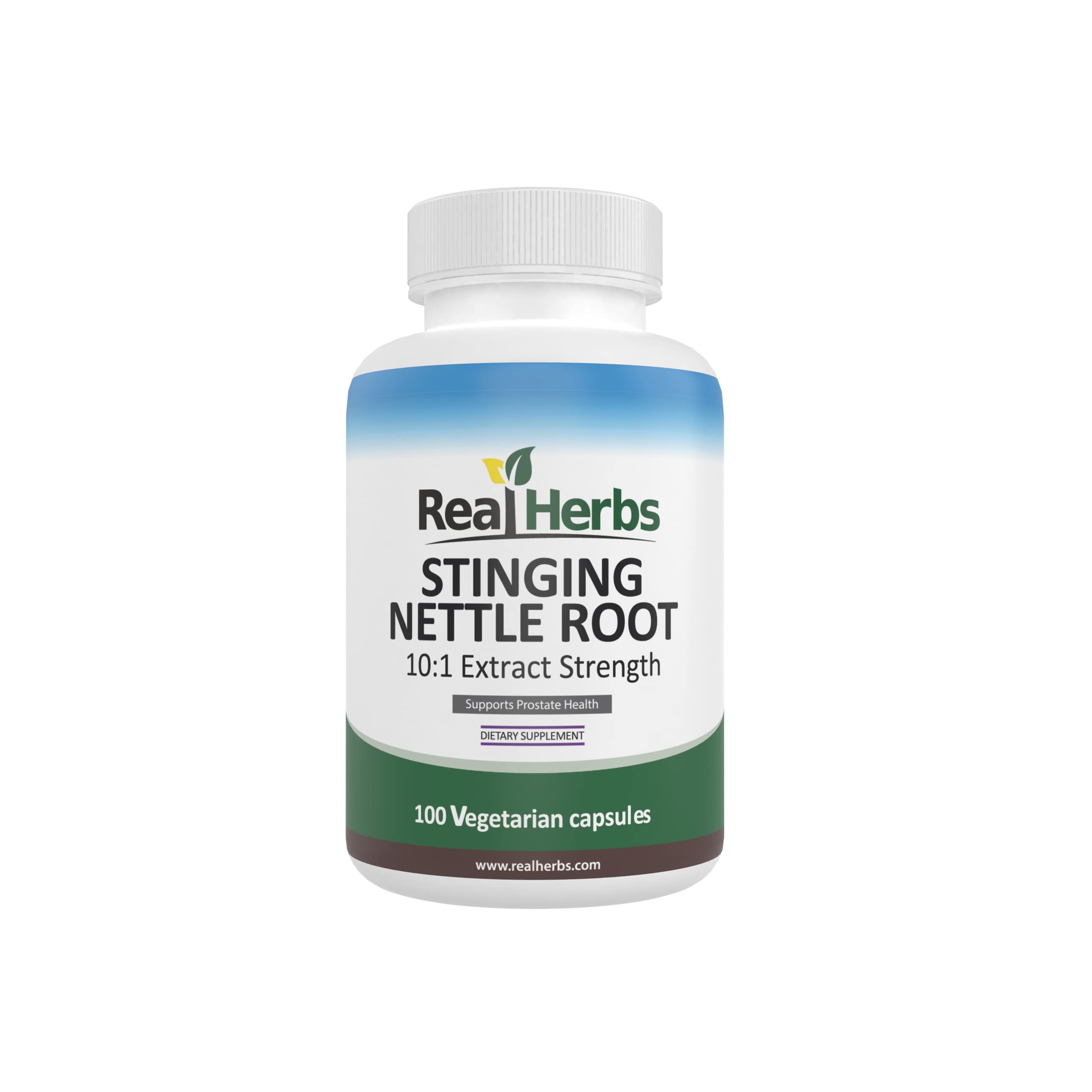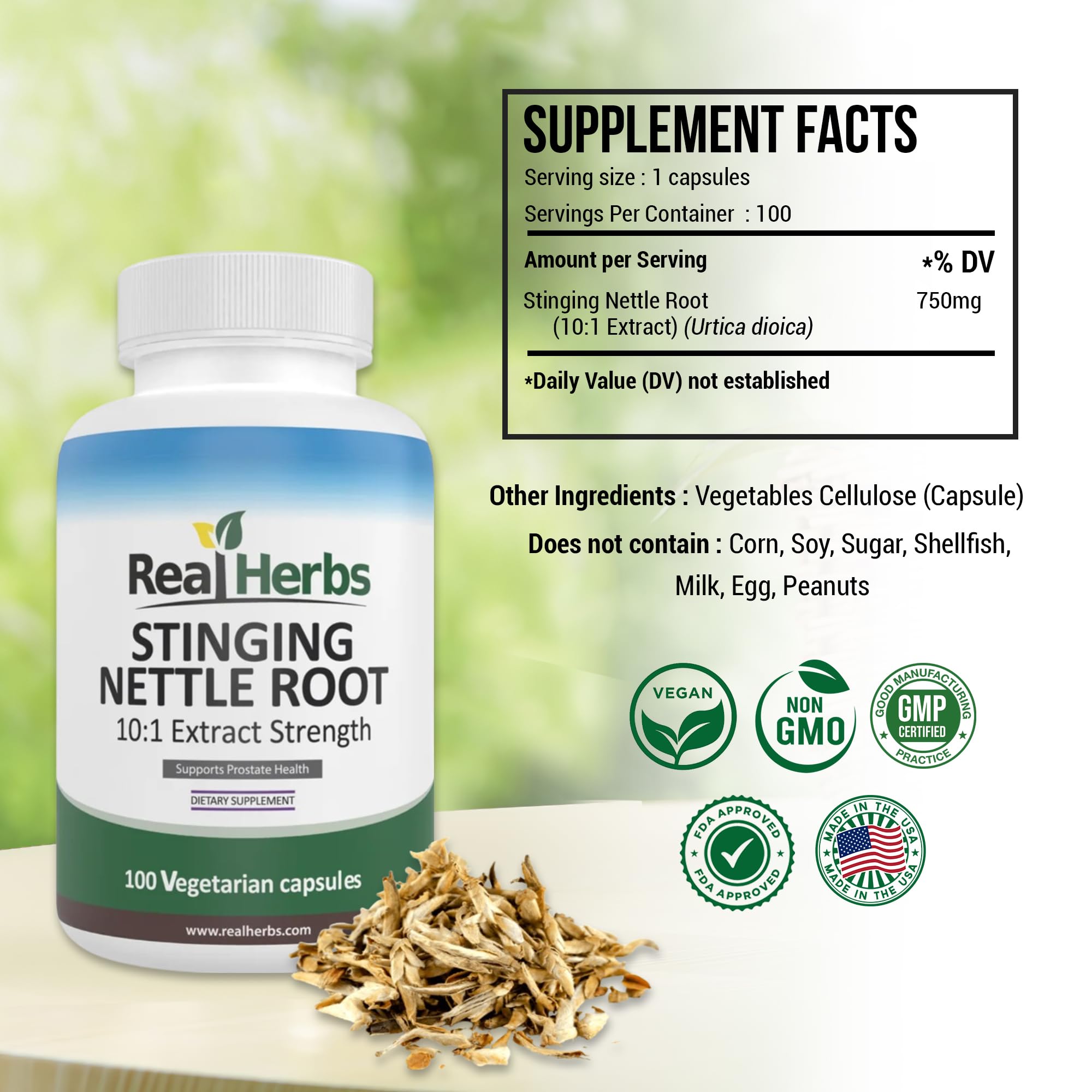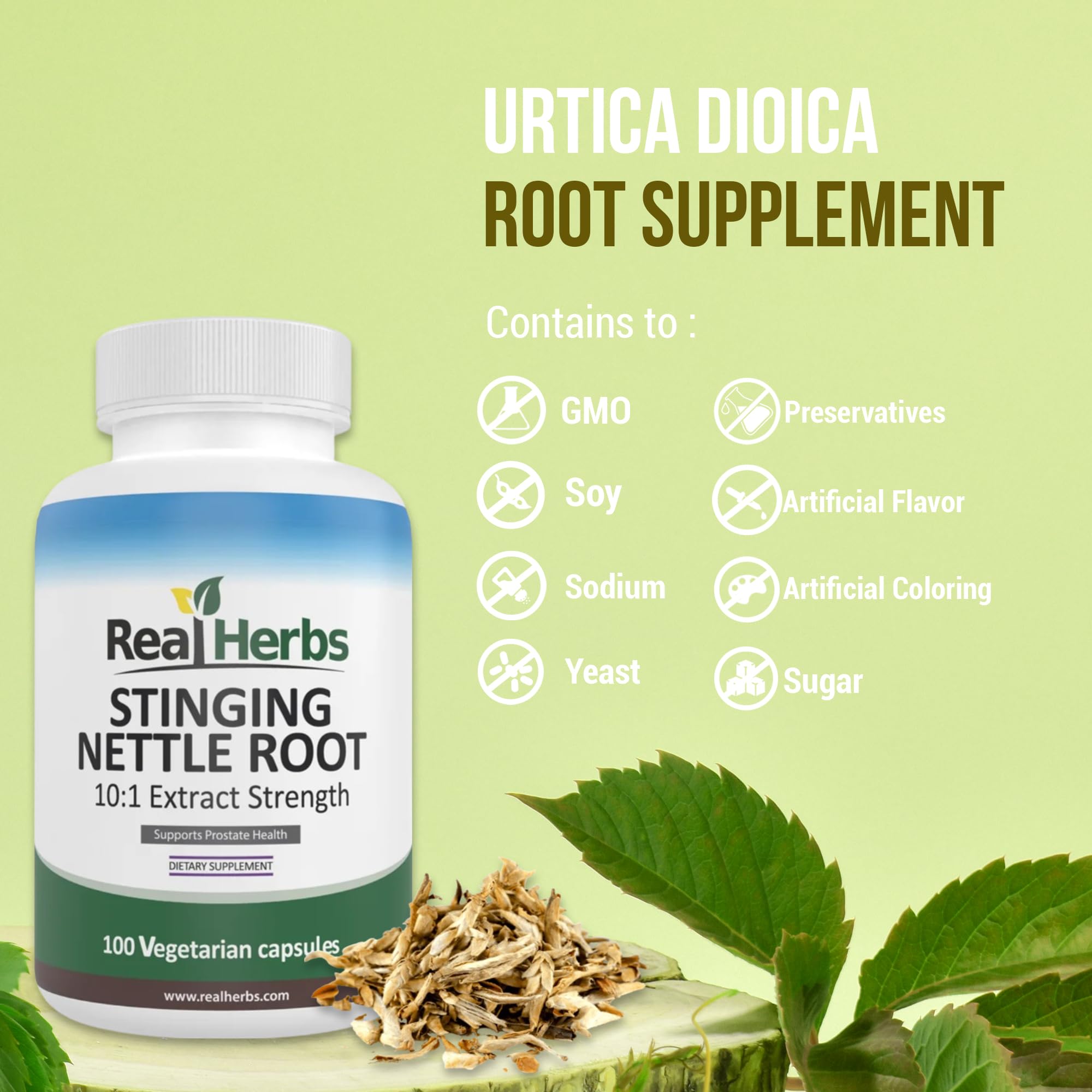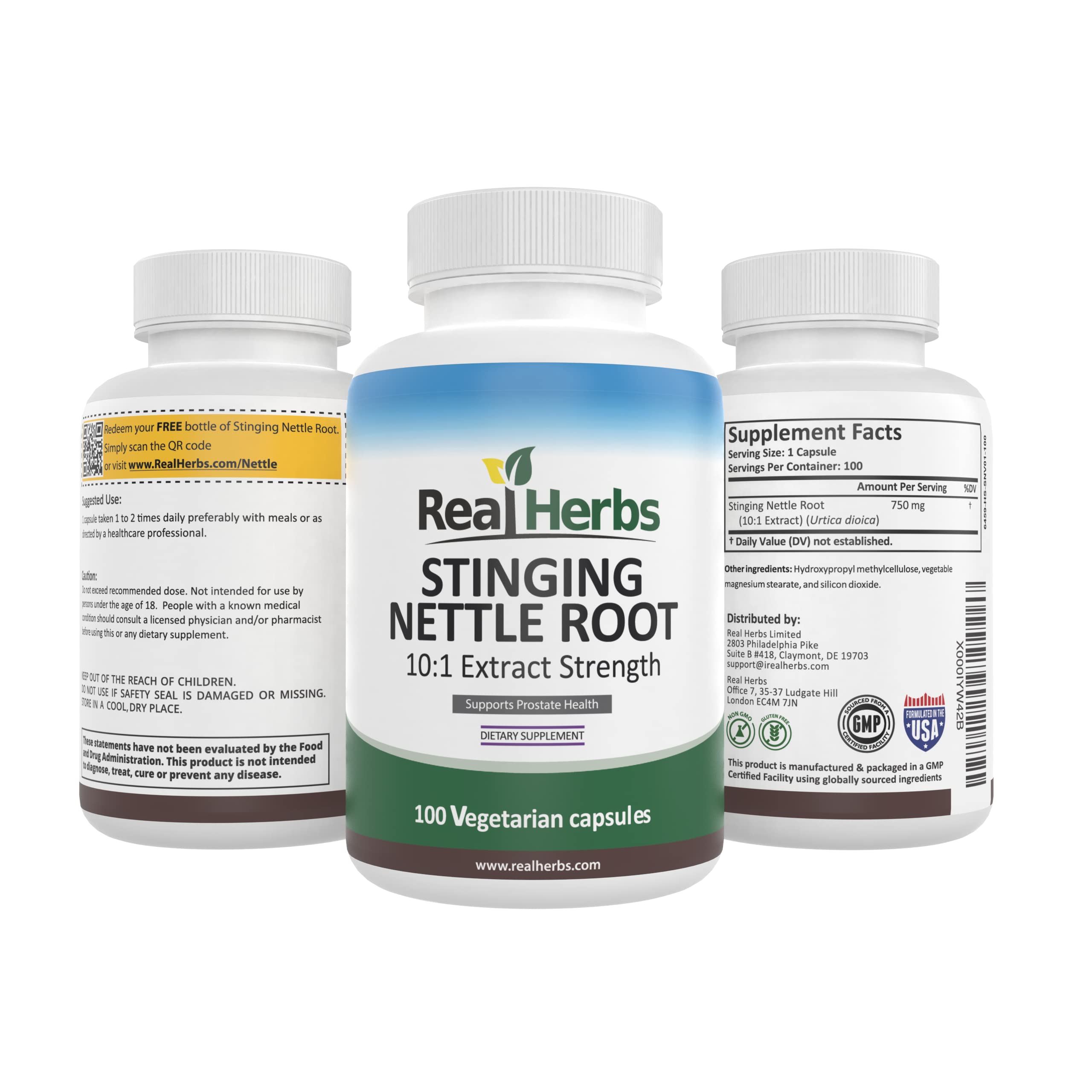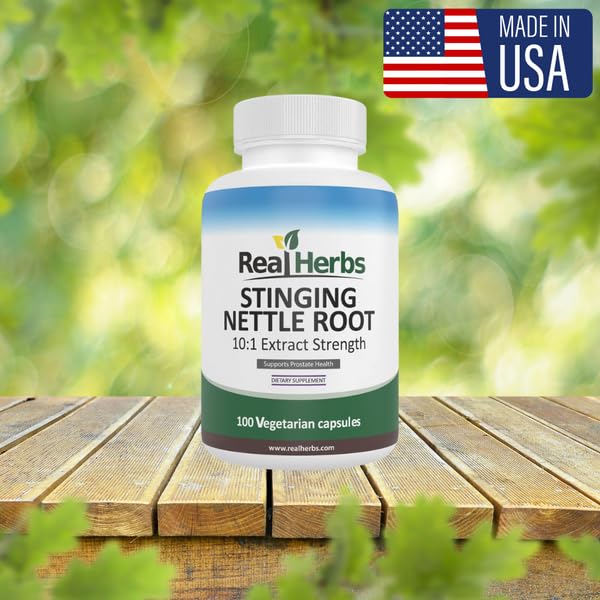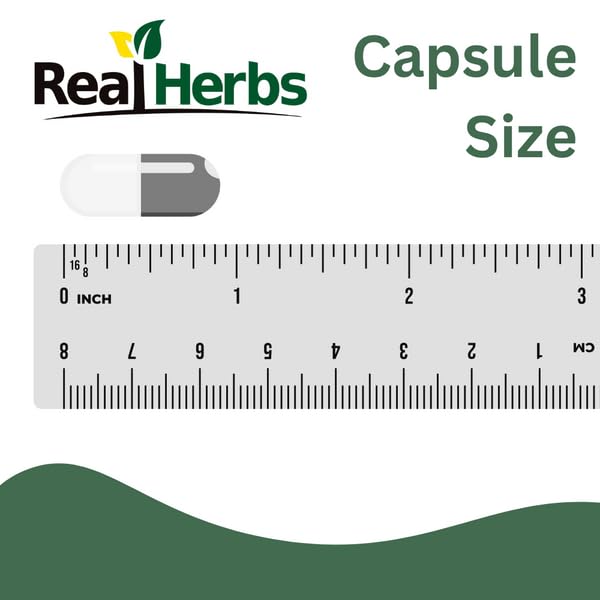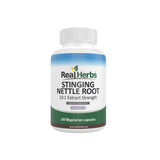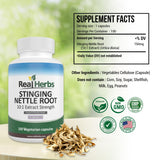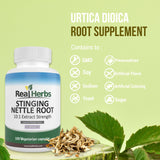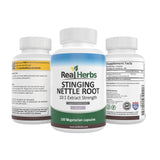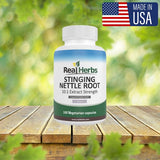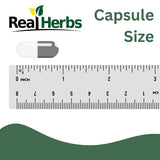How to Dry Stinging Nettle Leaf?
How to Dry Stinging Nettle Leaf?
Preserve Potency & Benefits
A comprehensive guide to preparing and storing this versatile herbal powerhouse.
Unlocking the Lasting Power of Stinging Nettle Leaf
Stinging nettle (Urtica dioica) is a revered herb, packed with vitamins, minerals, and bioactive compounds that contribute to its anti-inflammatory, antihistamine, and nutritive properties. While often enjoyed fresh (with care, of course!), drying stinging nettle leaf is a time-honored practice that allows you to preserve its potent health benefits for year-round use. Proper drying is crucial; it prevents spoilage, concentrates beneficial compounds, and transforms the fresh, stinging plant into a safe, versatile ingredient for teas, infusions, and culinary delights. This guide will walk you through the essential steps and considerations for how to dry stinging nettle leaf, ensuring you retain its maximum potency and therapeutic value.
From selecting the prime time for harvest to understanding the nuances of different drying methods and mastering long-term storage, mastering the art of drying nettle leaf is an invaluable skill for any herbal enthusiast.

The Science of Preservation: Why Drying Nettle Matters
Drying is more than just removing water; it's a critical preservation technique that safeguards the delicate phytochemicals responsible for stinging nettle's health benefits. The primary goals of drying medicinal herbs are to:
- Prevent Microbial Growth: Moisture is a breeding ground for mold, yeast, and bacteria. Reducing water content to below 10-15% (dry basis) inhibits their growth, preventing spoilage and potential health hazards .
- Inactivate Enzymes: Fresh plants contain enzymes that, even after harvesting, can continue to break down beneficial compounds. Proper drying inactivates these enzymes, thereby preserving the herb's chemical integrity and potency .
- Concentrate Active Compounds: As water is removed, the concentration of the herb's active medicinal compounds increases, making the dried herb more potent by weight than its fresh counterpart.
- Extend Shelf Life: Properly dried and stored nettle leaf can retain its efficacy for up to a year or more, providing a sustainable supply of this valuable herb .
- Enhance Usability: Dried nettle leaf is easier to store, transport, and incorporate into various preparations, from herbal teas to powders for capsules.
Research highlights that the chosen drying method significantly impacts the retention of bioactive compounds like phenols, flavonoids, and ascorbic acid (Vitamin C), as well as antioxidant activity , . The aim is always to dry quickly but gently to minimize degradation.
Harvesting Stinging Nettle Leaf: Timing is Key
The quality of your dried nettle starts with careful harvesting of the fresh plant.
- Best Time to Harvest: Harvest stinging nettle leaves in **early spring to early summer**, before the plant flowers or goes to seed. At this stage, the leaves are most tender and nutrient-dense, and the stinging hairs are less developed. After flowering, the leaves can become tough and may develop compounds that are less desirable for consumption .
- Choose a Clean Location: Select plants from areas free from pollutants, pesticides, or roadside contamination.
- Wear Protective Gear: This is critical! Always wear sturdy gloves (garden or rubber gloves work well), long sleeves, and pants when harvesting fresh stinging nettle to protect your skin from the stinging hairs.
- How to Cut: Using sharp scissors or shears, cut the upper 4-6 inches of the plant, including the tender leaves. Avoid pulling the entire plant from the root.
- Timing of Day: Harvest on a dry day, ideally in the late morning after the dew has evaporated but before the intense heat of midday, which can cause wilting .
Once harvested, handle the nettle gently to minimize bruising, and bring it indoors promptly for processing.
Drying Methods: Choosing Your Approach
Several methods can be used to dry stinging nettle leaf, each with its advantages and disadvantages regarding speed, cost, and retention of active compounds.
1. Air Drying (Hanging/Screen Drying)
Often considered the simplest and best method for preserving volatile oils and active compounds in herbs like nettle, as it uses low heat.
- Advantages: Cost-effective, gentle, good preservation of color and active compounds when done correctly.
- Disadvantages: Slower, requires adequate space and proper environmental conditions.
2. Dehydrator Drying
A food dehydrator offers a more controlled and faster drying process.
- Advantages: Faster than air drying, controlled temperature and airflow, less risk of mold if set correctly.
- Disadvantages: Requires an initial investment, can still degrade heat-sensitive compounds if temperature is too high.
3. Oven Drying (with Caution)
While possible, oven drying is generally not recommended for delicate herbs like nettle due to the high risk of degrading heat-sensitive compounds.
- Advantages: Fastest method.
- Disadvantages: High risk of nutrient degradation, loss of aroma and color, can "cook" rather than dry the herb.
4. Sun Drying (Generally Not Recommended)
Traditionally used, but modern understanding advises against direct sun drying for most medicinal herbs.
- Advantages: Free, traditional method.
- Disadvantages: High risk of contamination (insects, dust), significant loss of color and sensitive compounds (like Vitamin C and β-carotene) due to UV exposure and uncontrolled temperatures , .
Comparison of Drying Methods for Stinging Nettle Leaf
Step-by-Step Guide: Air Drying Stinging Nettle Leaf
Air drying is often the preferred method for home herbalists to retain the maximum therapeutic properties of stinging nettle.
- Preparation (No Washing!): Unlike many vegetables, it's generally recommended *not* to wash stinging nettle leaves after harvesting. Washing can introduce excess moisture and potentially bruise the delicate leaves, increasing the risk of mold. Instead, gently shake the bundles to dislodge any insects or debris. If the leaves are visibly dirty, a very light, quick rinse followed by thorough patting dry is acceptable, but air drying after is critical.
- Bundle and Tie: Gather small bunches of nettle stems (4-6 stems per bundle) and secure them together tightly at the base with natural twine or a rubber band. Ensure the bundles are not too dense, as this restricts airflow and promotes mold.
-
Hang to Dry: Hang the nettle bundles upside down in a suitable drying location. Ideal conditions include:
- Darkness: Direct sunlight degrades chlorophyll (causing fading) and many active compounds. A dark room, attic, or unused closet is ideal , .
- Dryness: Low humidity is crucial. Avoid damp basements or bathrooms.
- Good Air Circulation: This is paramount to prevent mold. Ensure ample space between bundles and good airflow in the room. A fan can be used to gently circulate air (not directly blow on) in humid environments.
- Moderate Temperature: Aim for consistent room temperature, typically between 20-25°C (68-77°F) .
- Monitor Drying Progress: Check your nettle bundles every few days. The drying time will vary significantly based on environmental humidity and the size of your bundles, typically taking **1 to 2 weeks** .
- Test for Dryness: Nettle is fully dry when the leaves are crispy and crumble easily between your fingers, and the stems snap rather than bend. Any sign of pliability or dampness means further drying is needed. If you notice any mold, discard the affected batch immediately .
Once thoroughly dry, you're ready for storage.
Proper Storage of Dried Stinging Nettle Leaf
Correct storage is as vital as proper drying to maintain the potency and shelf life of your stinging nettle leaf.
- Airtight Containers: Transfer the completely dried leaves (whole or lightly crushed) into airtight glass jars or metal tins with tight-fitting lids. Avoid plastic, as it can retain odors and potentially compromise quality .
- Dark Place: Store the containers in a cool, dark place, such as a pantry, cabinet, or dark shelf. Light, especially direct sunlight, degrades the active compounds and color of the herb , .
- Cool and Dry: Keep containers away from heat sources (stoves, dishwashers, heating vents) and moisture (sinks). Consistent, moderate temperatures are best .
- Label and Date: Always label your containers with the herb name and the date it was dried. This helps you track freshness.
- Shelf Life: Properly dried and stored stinging nettle leaf can retain good potency for **up to one year**. Its strength can be judged by its aroma – a strong, fresh aroma indicates good quality . Whole leaves tend to retain their flavor longer than finely crushed or powdered leaves .
Usage of Dried Nettle Leaf
Once dried, stinging nettle leaf transforms into a versatile ingredient for various applications:
- Herbal Teas and Infusions: This is one of the most popular uses. Steep 1-2 teaspoons of dried nettle leaf in hot water for 10-15 minutes for a nourishing and supportive tea.
- Culinary Uses: Dried nettle powder or finely crumbled leaves can be added to soups, stews, smoothies, pestos, or baked goods for a nutritional boost. Its flavor is mild and slightly earthy.
- Capsules: For those who prefer a more precise dosage or convenience, dried nettle leaf can be ground into a powder and encapsulated.
- Topical Applications: Dried nettle can also be infused into oils to create salves or balms for external use, though the fresh plant is traditionally used for 'urtication' (stinging for joint pain).
Safety & Precautions When Drying Nettle
Beyond the initial sting of the fresh plant, there are safety considerations specific to the drying process:
- Protect Your Hands: While drying, the stinging hairs on fresh nettle leaves remain active until completely dry. Continue to wear gloves until the leaves are fully brittle.
- Mold Prevention: This is the most significant concern during drying. Inadequate air circulation or high humidity can lead to mold growth, which can produce mycotoxins harmful if consumed. Always ensure proper drying conditions and discard any batch showing signs of mold .
- Allergies: Even dried nettle can cause mild allergic reactions in sensitive individuals. If you experience itching, rash, or digestive upset, discontinue use.
Always consult a healthcare professional before consuming stinging nettle, especially if you have underlying health conditions, are pregnant or breastfeeding, or are taking medications.
Conclusion: Your Nettle Journey, from Harvest to Health
Drying stinging nettle leaf is a rewarding process that extends the availability of this incredible herb, allowing you to benefit from its rich nutritional and medicinal properties all year long. By carefully harvesting, choosing an appropriate low-heat drying method like air drying or a dehydrator, and implementing proper storage techniques, you can ensure that your dried nettle retains its vibrant color, potent aroma, and maximum therapeutic value. This commitment to proper preservation transforms a seasonal bounty into a long-lasting cornerstone of your natural health regimen. Embrace the satisfaction of preparing your own herbal remedies, knowing you've preserved the best of nature's gifts.
Ready to Experience the Natural Difference?
While you master drying the leaf, discover the natural difference of our premium Nettle Root extract. Crafted with purity and potency in mind, our product is designed to support your health journey naturally.
All our products are backed by our 100-Day Money-Back Guarantee!
"My husband's prostate issues have significantly improved with the Nettle Root. It's been a game-changer for his comfort." - David R.
Scientific Credibility & Citations
- Himalayan Journal of Science and Technology. (2020). *Effect of Drying Temperature and Natural Fermentation on the Phytochemical Composition of Stinging Nettle Buds (Urtica parviflora)*. https://www.nepjol.info/index.php/hijost/article/view/33859 (Discusses optimal drying temp for phytochemicals).
- ResearchGate. (2022). *Review on drying methods for herbal plants*. https://www.researchgate.net/publication/358612775_Review_on_drying_methods_for_herbal_plants (General review on herb drying effects on bioactive compounds).
- Colorado State University Extension. (n.d.). *Herbs: Preserving and Using*. https://extension.colostate.edu/topic-areas/nutrition-food-safety-health/herbs-preserving-and-using-9-335/ (Provides general advice on air drying, dehydrating, and storage for herbs).
- MDPI. (2021). *Effect of Drying Methods on Phenolic Compounds and Antioxidant Activity of Urtica dioica L. Leaves*. PMID: 33498877 (Compares freeze-drying, oven-drying, and heat pump drying for U. dioica leaves).
- Heliyon. (2020). *Effect of drying methods on chemical composition and antioxidant activity of underutilized stinging nettle leaves*. PMID: 32478185 (Compares oven-drying vs. freeze-drying for nettle leaves on various compounds).
- Saarinen Organics. (n.d.). *Stinging nettle - how to process and dry*. https://saarinenorganics.com/blogs/diy-recipies/stinging-nettle-how-to-process-and-dry (Practical guide on harvesting and air drying).
- Wild Dispensary. (n.d.). *How To Store Herbs: 5 Ways To Make Them Last Longer*. https://wilddispensary.co.nz/blogs/news/how-to-store-herbs (General tips on storing dried herbs, light and airtight containers).
- The Spruce. (n.d.). *How to Dry and Store Fresh Garden Herbs*. https://www.thespruce.com/how-to-dry-and-store-herbs-1403397 (Practical guide on air drying, monitoring dryness).
Author Profile: Jessica Johnson, Herbal Science Researcher
With a background in botanical medicine and a passion for natural healing, Jessica Johnson brings years of dedicated research and practical experience to the field of herbal science. Her work focuses on understanding the complex biochemistry of medicinal plants and translating scientific findings into accessible, actionable health information. Jessica is committed to promoting evidence-based natural solutions for optimal well-being.
Disclaimer: The information provided in this article is for educational purposes only and is not intended as medical advice. Always consult with a qualified healthcare professional before making any decisions about your health or starting any new supplement regimen. Individual results may vary.

